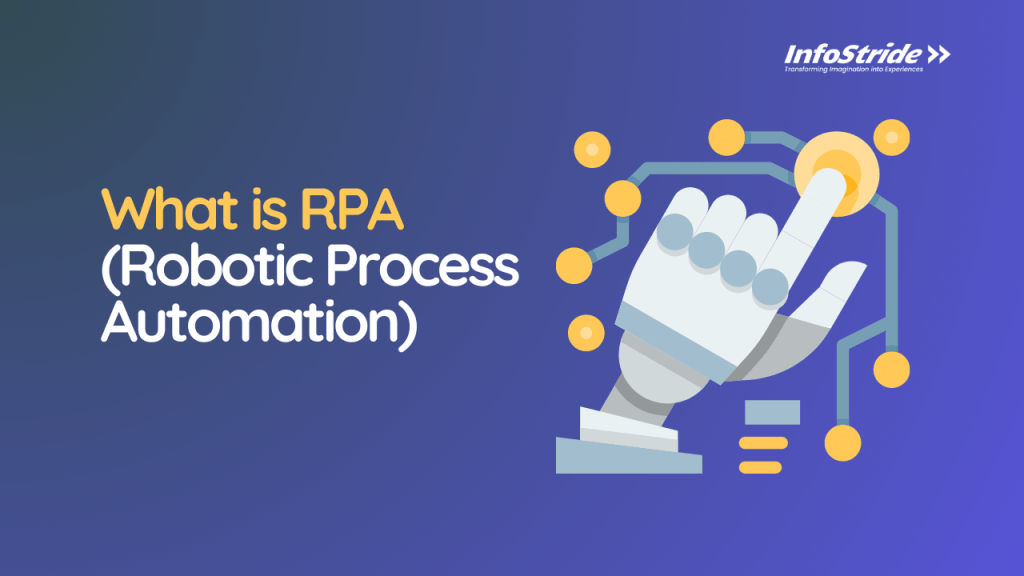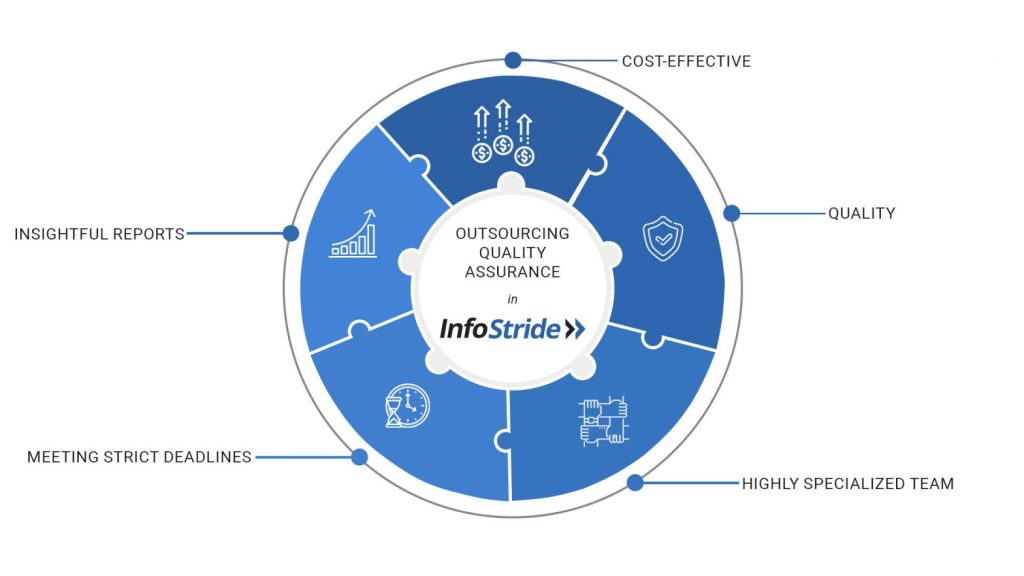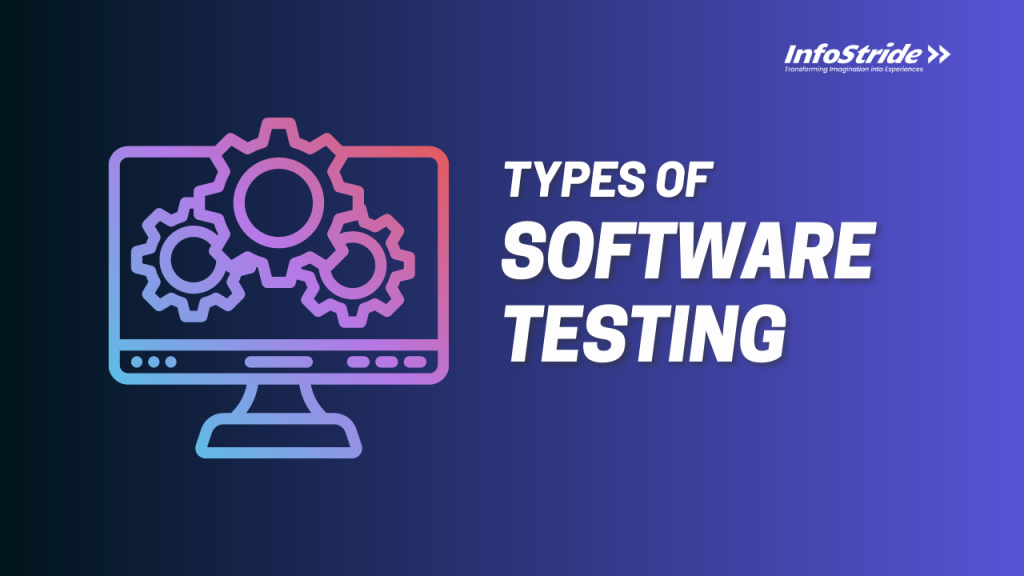As we step into the fast-paced world of 2024, the realm of eCommerce marketing is poised for dynamic shifts and unprecedented growth. With technology evolving at a rapid pace, businesses in the eCommerce sphere must stay ahead of the curve to maximize their sales potential. In this blog, we explore cutting-edge eCommerce marketing tips and ideas designed to elevate your strategies and ensure a thriving presence in the competitive digital marketplace of 2024. But first thing first, let’s establish what eCommerce marketing really implies.
What is eCommerce Marketing?
eCommerce marketing is the strategic practice of promoting and selling products or services online. It encompasses a range of activities, including advertising, social media engagement, search engine optimization (SEO), and email campaigns. The primary goal is to attract and convert potential customers in the digital space, optimizing the online shopping experience. In essence, eCommerce marketing services leverage various channels and techniques to drive traffic, enhance brand visibility, and ultimately maximize sales in the competitive online marketplace.
Now, let’s delve into practical examples that showcase the eCommerce marketing strategies, each contributing uniquely to online success.
Brand Introduction Video:
Introducing your brand through a captivating video offers a visual narrative that resonates with your audience. This multimedia approach provides a dynamic showcase of your products, values, and brand personality. An engaging brand introduction video not only enhances brand recognition but also establishes an emotional connection with potential customers, setting the stage for a memorable and impactful brand presence.
Customer Referral Program:
A customer referral program turns satisfied customers into brand advocates. By incentivizing existing customers to refer friends or family, businesses leverage the power of word-of-mouth marketing. This strategy fosters customer loyalty while expanding the customer base. Rewards, discounts, or exclusive perks for both the referrer and the new customer create a win-win scenario, driving organic growth through trusted recommendations.
Email with a Product Bundle Discount:
Targeted email campaigns featuring product bundles with exclusive discounts entice customers with added value. This personalized approach not only promotes specific products but also encourages upselling. By strategically crafting enticing bundle offers and communicating their unique benefits, businesses effectively leverage email marketing to drive conversions and increase average order value.
Blog Articles Explaining How to Use Products:
Educational blog content showcasing how to use products addresses customer inquiries and builds trust. These articles offer valuable insights, tips, and tutorials, demonstrating the practical benefits of the products. By providing helpful information, businesses position themselves as authorities in their niche, enhancing the overall customer experience and fostering a sense of confidence in their products.
Source: AU LIT FINE LINENS
Social Media Posts with Video Featuring Influencers:
Collaborating with influencers for social media campaigns brings authenticity and credibility to your brand. Short video clips or posts featuring influencers using and endorsing products create a powerful impact. The influencer’s authenticity resonates with their audience, driving engagement and prompting followers to explore and purchase the showcased products. This form of influencer marketing leverages the trust established between the influencer and their audience.
Also Read – How To Build an eCommerce App With AI Capabilities
Top 8 eCommerce Marketing Tips in 2024
In the dynamic landscape of eCommerce, employing diverse marketing channels is not just advantageous—it’s imperative. According to a recent study, businesses utilizing multiple eCommerce marketing channels experience a 250% higher purchase frequency compared to those relying on a single channel alone. Let’s explore the various types of eCommerce marketing tips that businesses can leverage to optimize their online presence and drive sustained growth.
Email Marketing:
As a versatile tool, email marketing offers a range of campaigns tailored to various stages of the customer journey. From enticing sale announcements that generate immediate interest to personalized birthday emails that celebrate customers, each email serves as a direct line of communication with your audience. According to a recent report, email marketing continues to be a highly lucrative strategy, boasting an impressive average return on investment (ROI) of $42 for every dollar spent. Let’s explore the diverse types of email marketing, unraveling the tactics that captivate, nurture, and convert potential customers into loyal advocates for your eCommerce business.
-
Sale Announcement:
Informing your audience about upcoming sales generates anticipation and drives immediate interest. Crafting compelling sale announcement emails with clear details and enticing visuals encourages customers to explore your offerings and capitalize on limited-time promotions.
-
Welcome Email:
A well-crafted welcome email sets the tone for a positive customer experience. It’s an opportunity to express gratitude, provide essential information, and possibly offer an exclusive incentive, creating a memorable first impression.
-
Exclusive Offers:
Rewarding customer loyalty with exclusive offers strengthens the relationship. Sending tailored emails that present special discounts, early access, or loyalty rewards fosters a sense of appreciation and encourages repeat business.
-
Birthday Celebration:
Personalized birthday emails add a human touch to your marketing strategy. Acknowledging customers on their special day with exclusive discounts or personalized offers not only celebrates the customer but also boosts brand affinity.
-
Order Confirmation:
Beyond a mere transactional email, the order confirmation serves as an opportunity to reiterate appreciation, provide order details, and showcase related products, contributing to potential future purchases.
-
Product Launch:
Building excitement around new products is crucial. Email marketing effectively introduces and highlights the features of a new product, inviting customers to be among the first to experience it.
-
Seasonal Campaigns:
Tailoring your marketing to seasonal trends creates relevance and urgency. Seasonal campaigns, whether for holidays, events, or specific times of the year, resonate with customers and drive engagement.
-
Cart Abandonment:
Addressing cart abandonment through strategic emails reminds customers of items left in their cart. Offering incentives or highlighting product benefits can prompt them to complete the purchase.
-
Email Newsletters:
Regular newsletters provide a platform to share valuable content, showcase new arrivals, and keep customers engaged. Segmentation allows for targeted content, ensuring relevance to different customer segments.
These types of email marketing campaigns, when strategically deployed, not only nurture customer relationships but also contribute significantly to driving sales and fostering brand loyalty in the competitive eCommerce landscape.
Also Read – A Step-by-Step Guide to Develop On-Demand Food Delivery App
SMS Marketing
SMS marketing is a powerful tool for direct communication, offering instant engagement and unparalleled reach. With a staggering 98% open rate, SMS messages ensure that your brand’s message is seen and acted upon by a vast majority of your audience. Leveraging SMS marketing enables businesses to deliver timely promotions, updates, and personalized offers directly to customers’ mobile devices, driving immediate action and fostering customer loyalty.
SMS marketing finds relevance across various occasions and stages of the customer journey:
- Promotional Campaigns: Businesses utilize SMS to announce flash sales, limited-time offers, and exclusive discounts, prompting immediate engagement and purchases.
- Order Updates: SMS notifications keep customers informed about their order status, shipping details, and delivery updates, enhancing transparency and satisfaction.
- Event Reminders: SMS reminders for upcoming events, appointments, or webinars ensure attendance and boost participation rates.
- Feedback Requests: Soliciting feedback via SMS allows businesses to gather valuable insights and improve customer experiences, fostering loyalty and trust.
- Abandoned Cart Recovery: Sending personalized SMS messages to remind customers about abandoned carts and offering incentives to complete the purchase can significantly increase conversion rates.
Successful SMS campaigns highlight the potential and effectiveness of this marketing channel:
- Zara’s Flash Sale Notifications:
Zara, a popular fashion retailer, leverages SMS for flash sale notifications. Subscribers receive timely alerts about impromptu sales, with text messages highlighting selected items, enticing customers to make quick purchasing decisions.
- Starbucks’ SMS Discounts:
Starbucks employs SMS marketing to distribute limited-time discounts and promotions to its customers. Subscribers receive text messages featuring special offers on new beverages, seasonal treats, or discounts during specific time frames, boosting foot traffic to Starbucks locations.
These instances underscore the immense potential of SMS marketing in driving engagement, enhancing customer experiences, and ultimately, boosting sales in the competitive eCommerce landscape. By harnessing the immediacy and effectiveness of SMS, businesses can forge meaningful connections with their audience and achieve remarkable results.
PPC Marketing:
Pay-Per-Click (PPC) marketing offers businesses a dynamic and measurable way to reach their target audience. A striking 63% of people would click on a Google ad, underlining the significance of PPC campaigns in driving website traffic, generating leads, and boosting conversions.
Occasions Suited for PPC Marketing:
- Product Launches: PPC is effective for creating buzz and visibility around new product launches. Strategic ad placements ensure that your audience is immediately aware of your latest offerings.
- Seasonal Promotions: Whether it’s holiday sales, back-to-school offers, or Black Friday deals, PPC campaigns allow businesses to capture the attention of consumers during key shopping seasons.
- Event Promotions: PPC is ideal for promoting events such as webinars, product demonstrations, or store openings. Targeted ads ensure that your event gains the exposure it needs.
- Clearance Sales: For businesses looking to quickly sell off excess inventory or promote clearance sales, PPC campaigns can swiftly generate interest and drive traffic to specific product pages.
Tips for Successful PPC Marketing:
- Audience Segmentation: Tailor your PPC campaigns by segmenting your audience based on demographics, interests, or online behavior. This ensures that your ads reach the most relevant audience segments.
- Compelling Ad Copy: Craft compelling and concise ad copy that highlights unique selling points, promotions, or special offers. A compelling message encourages clicks and conversions.
- Strategic Keyword Selection: Choose relevant and high-performing keywords to optimize your ads for search engines. Regularly update and refine your keyword strategy to stay aligned with changing market trends.
- A/B Testing: Conduct A/B testing on ad elements such as headlines, visuals, and call-to-action buttons. Analyze the performance of different variations to refine your strategy and maximize results.
- Retargeting Campaigns: Implement retargeting strategies to reach users who have previously visited your website. Remind them of products they viewed but did not purchase, increasing the likelihood of conversion.
A staggering 41% of clicks go to the top three paid ads on the search results page, emphasizing the importance of securing prime positions through strategic bidding and ad relevance.
PPC marketing, when executed strategically, provides businesses with a powerful tool to amplify their online presence, drive targeted traffic, and achieve specific marketing objectives.
Search Engine Optimization (SEO):
Search Engine Optimization (SEO) is the bedrock of digital visibility, empowering businesses to enhance their online presence and climb the ranks of search engine results. At its core, SEO is the strategic optimization of web content to align with search engine algorithms, ensuring that a website is not only discovered but also prominently featured when users search for relevant queries.
Key Elements of a Successful eCommerce SEO Strategy:
On-Page SEO:
- Keyword Research and Implementation: Identify target keywords and strategically incorporate them into content, meta tags, and headers.
- Content Optimization: Create valuable and relevant content that addresses user intent and provides a seamless reading experience.
- User-Friendly URLs: Optimize URLs for clarity and relevance to enhance both user experience and search engine understanding.
Off-Page SEO:
- Link Building: Build a strong network of backlinks from reputable and relevant websites to establish authority and credibility.
- Social Media Engagement: Leverage social platforms to amplify content, drive traffic, and contribute to brand visibility.
- Online Reputation Management: Monitor and manage online reviews and mentions to enhance the brand’s digital reputation.
Technical SEO:
- Site Structure: Ensure a logical and user-friendly site structure that facilitates easy navigation and enhances the user experience.
- Mobile Optimization: Optimize for mobile devices to cater to the increasing number of users accessing websites via smartphones and tablets.
- Page Speed Optimization: Enhance page load times for a better user experience and improved search engine rankings.
Significance of SEO for Product Pages:
For eCommerce businesses, optimizing product pages is paramount. Product Listing Optimization involves:
- Strategic Use of Keywords: Incorporate relevant keywords in product titles, descriptions, and meta tags to enhance visibility.
- High-Quality Imagery: Use high-resolution images to showcase products and entice users.
- Clear Product Descriptions: Provide concise and informative product descriptions that address user queries.
By focusing on on-page, off-page, and technical aspects, businesses can enhance their digital footprint and establish a solid foundation for long-term online success.
Content Marketing:
Content marketing stands as a dynamic strategy, weaving compelling narratives that captivate, inform, and resonate with the target audience. It’s more than just blog posts and videos; it’s about creating an immersive brand experience that establishes authority, fosters engagement, and builds lasting connections.
Content Strategy For eCommerce Marketing
Setting Goals:
- Define Clear Objectives: Outline specific goals such as increasing brand awareness, driving website traffic, or generating leads.
- Establish Key Performance Indicators (KPIs): Metrics like engagement rates, click-through rates, and conversion rates measure the success of your content efforts.
Leverage Different Content Mediums:
- Diversify Content Types: Embrace blog posts, guides, videos, infographics, and podcasts to cater to diverse audience preferences.
- Multimedia Engagement: Enhance user experience by combining text with visuals and interactive elements.
Research and Picking the Right Topics:
- Understand Audience Needs: Research your target audience to identify their interests, pain points, and preferences.
- Keyword Research: Utilize SEO tools to identify relevant keywords and trending topics in your industry.
Create and Promote Your Content:
- Consistent Brand Voice: Maintain a consistent brand voice across all content, reflecting your brand’s personality and values.
- Social Media Amplification: Leverage social platforms to share and promote your content, reaching a wider audience.
Measure the Performance:
- Analytics Tracking: Utilize tools like Google Analytics to measure the performance of your content in terms of traffic, engagement, and conversion.
- Adjust Strategies: Regularly analyze performance data to refine your content strategy and adapt to changing audience behaviors.
Consider a scenario where a potential customer visits your website, explores blog posts, watches informative videos, but doesn’t make a purchase. Despite not converting immediately, the engaging content leaves a lasting impression. The next time they’re in the market for a similar product or service, the brand name lingers in their memory. This exemplifies the power of content marketing—creating a memorable brand presence that invites customers back for future interactions and potential conversions.
Affiliate Marketing:
Affiliate marketing fosters collaborative partnerships that drive revenue and expand brand reach. This performance-based marketing model empowers affiliates to promote products or eCommerce Development Services and earn a commission for each sale generated through their efforts. A staggering 81% of brands leverage affiliate marketing programs, emphasizing its significance in the modern eCommerce landscape.
Significance in eCommerce Marketing Strategy:
- Cost-Effective Advertising: With a pay-per-performance structure, businesses pay for actual sales or leads, making affiliate marketing a cost-effective way to drive revenue.
- Broader Audience Reach: Affiliates bring diverse audiences to the table, tapping into niche markets and demographics that may be challenging to reach through traditional advertising.
- Enhanced Credibility: Partnering with trusted affiliates lends credibility to your brand. Positive reviews and endorsements from affiliates build trust with potential customers.
- Expanded Online Presence: Affiliate marketing extends your brand’s online footprint, reaching customers through various platforms, blogs, and social media channels.
Also Read: eCommerce Website Development Cost
Competitive Affiliate Programs for eCommerce Stores:
- Generous Commission Structure: Offer competitive commission rates to attract quality affiliates. A compelling commission structure incentivizes affiliates to prioritize your products over competitors.
- Comprehensive Tracking Systems: Implement robust tracking mechanisms to accurately attribute sales to affiliates. Transparency builds trust and ensures fair compensation for affiliate efforts.
- Promotional Materials: Provide affiliates with high-quality promotional materials, including banners, product images, and persuasive copy. Equipping affiliates with effective tools enhances their marketing efforts.
- Tiered Commission Structures: Consider tiered commission structures that reward affiliates for higher volumes of sales. This motivates affiliates to continuously drive results and strive for increased performance.
- Incentive Programs: Introduce incentive programs, such as bonuses for top-performing affiliates or additional commissions for exceeding sales targets. This fosters healthy competition among affiliates.
According to a recent survey, 65% of marketers attribute between 5% to 20% of their annual revenue to affiliate marketing, underscoring its impact on revenue generation.
Social Media Marketing:
Social Media Marketing remains a vibrant and indispensable strategy, connecting businesses with their audience on a personal level. It’s more than just posts and likes; it’s a dynamic landscape where brands showcase their personality, engage users, and build lasting relationships. Let’s explore various campaign types that add depth and resonance to a brand’s social media presence.
-
Influencer Campaigns:
Enlisting influencers to champion your brand injects authenticity into your marketing efforts. Their genuine endorsements resonate with their followers, providing a trusted avenue for brand promotion.
-
Sponsored Posts:
Strategic paid promotions ensure your content reaches a targeted audience. Whether it’s boosting visibility or introducing a new product, sponsored posts enhance your brand’s digital footprint.
-
Competitions and Giveaways:
Transforming followers into participants, competitions and giveaways amplify engagement. The excitement around winning drives participation and extends your brand’s reach.
-
Product Launch:
Unveiling a new product on social media involves more than just showcasing features. Craft a narrative that captivates your audience, building anticipation and turning a launch into an event.
-
Brand Introductions:
Setting the stage for a brand’s social media debut requires a thoughtful approach. Communicate your identity, values, and offerings in a way that resonates with your target audience.
-
Sale Announcements:
Transform your social media channels into a virtual storefront by announcing sales and exclusive offers. The immediacy of social media prompts quick decisions, driving sales during promotional periods.
-
Polls and Surveys:
Fostering two-way communication, polls and surveys empower your audience. Seek their opinions, gather insights, and involve them in decision-making, enhancing the sense of community.
-
Hashtag Campaigns:
Creating a viral buzz is achievable through well-crafted hashtag campaigns. Encourage users to share content using a specific hashtag, boosting visibility and fostering a sense of belonging.
-
User-Generated Content Campaigns:
Turning your audience into content creators generates authenticity. Encourage users to share their experiences with your brand, creating a community-driven narrative.
Social Media Marketing, with its diverse campaigns, is a dynamic avenue for building brand presence, engaging with your audience, and driving meaningful interactions in the digital space.
Influencer marketing
Influencer marketing addresses the challenge of building authentic connections with target audiences in a saturated digital landscape. With consumers becoming increasingly selective, influencers serve as trusted mediators who resonate with their followers. Their genuine endorsements cut through the noise, fostering credibility and bridging the gap between brands and consumers.
Example of Influencer Marketing:
Consider the collaboration between skincare brand Glossier and beauty influencer Emily Weiss. By sharing her genuine experiences with Glossier products, Emily cultivated trust among her followers. Glossier, in turn, gained access to a highly engaged audience, leveraging Emily’s authenticity to promote their products effectively.
This example illustrates how influencer marketing transcends traditional advertising, offering a genuine connection that resonates with audiences, thereby addressing the challenge of authenticity in contemporary marketing landscapes.
Must Read – Fashioning the Future: A Deep Dive into the Stitch Fix Business Model
How To Create an eCommerce Marketing Plan
As the eCommerce market becomes increasingly competitive, standing out amidst the digital clutter requires a meticulous approach tailored to your brand. While there’s no one-size-fits-all solution, certain crucial steps should never be overlooked.
Crucial Steps in Crafting an eCommerce Marketing Plan:
-
Identify Your Target Customers:
Understanding your audience is the cornerstone of any successful marketing plan. Identify their demographics, preferences, and behaviors to tailor your strategies effectively.
-
Pick the Right eCommerce Marketing Strategies:
Choose strategies that align with your brand and resonate with your target customers. Whether it’s influencer marketing, social media campaigns, or SEO, align your approach with your goals.
-
Identify the Marketing Channels:
Know where your audience spends their time. Whether it’s social media platforms, search engines, or email, selecting the right channels ensures your message reaches the right people.
-
Create Campaigns and Goals:
Define clear, achievable goals for your campaigns. Whether it’s increasing brand awareness, driving sales, or expanding your customer base, setting goals guides your efforts.
-
Create Engaging Content:
Compelling content is the heartbeat of eCommerce marketing. From product descriptions to blog posts and social media updates, craft content that captivates and converts.
-
Track Results:
Implement analytics tools to monitor the performance of your campaigns. Track key metrics, understand user behavior, and adapt your strategies based on data-driven insights.
-
Adjust Your Strategy:
Flexibility is key. As the digital landscape evolves, be ready to adjust your strategy. Stay agile and responsive to changes in market trends and consumer behavior.
How Can InfoStride Help
The surge in eCommerce popularity continues to usher in a wave of new entrants, making the market both vibrant and saturated. Without a carefully crafted eCommerce marketing plan, it’s challenging to achieve meaningful results. The strategies and tips outlined in our blog serve as a compass in this competitive landscape.
At InfoStride, we understand the intricacies of this dynamic market. As one of the most trusted eCommerce digital marketing services providers, our team possesses extensive experience in assisting brands. We specialize not only in eCommerce application development but also in ensuring optimal launches and sustaining profitability in the long run.
Our tailored services cater to diverse needs, whether you’re seeking MVP Development Services or comprehensive solutions. Connect with us to be your partner in navigating the dynamic world of eCommerce.











